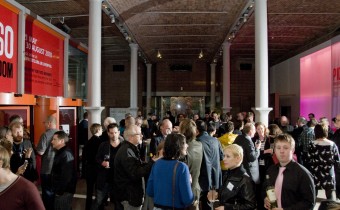Utilitarian austerity and noise music provide sensory assault in The Bunker
Producer John Stevens’s “vicious mix” of noise music in an austere setting is a sensory assault for serious listeners
The Island was once a police station in the centre of Bristol and is now an arts complex of studios and performance spaces. By day it’s used for circus training and photography workshops; by night the building’s stark and oppressive history reclaims the atmosphere.
Bunker was the penultimate event in the collaboration between producer John Stevens and Bristol’s contemporary arts centre, the Arnolfini. Their series Out of Place was billed as “stereo field trips taking live music out of its comfort zone”: essentially site-specific one-offs in which quirky locations become the starting point for musical programming. The other non-standard performance spaces included a farm and a swimming pool, which presumably made more easily convivial settings than The Island’s old detention cells.
These remain more-or-less as they were when the building was a police station. Accessing them involves venturing down gated staircases and through a high-walled concrete courtyard towards a low block clad in institutional white tiles and menacingly low ceilings. The toilets are still complete with plank bed, tiny barred windows and heavy-duty doors. A drinks bar and a comfy sofa was installed near the entrance, but there was no avoiding the utilitarian austerity of the place.
There’s something subversive about noise music: about voluntarily exposing ourselves to its realm of violent and abrasive sounds. So, too, was there subversion in Bunker’s jarring claustrophobia and freedom. The venue was wilfully uncompromising – prisons are hardly designed for comfort, particularly early-20th century ones – yet we entered the place of our own agency, for nothing more than a night’s entertainment. It was a keen reminder that the former inmates of the same walls didn’t enjoy the same degree of choice.
“Samples of sirens and shattering glass spoke shot through the musical fabric, and there was real viciousness in the mixing and the relentless, hard-driven rhythms.”
The music was performed in the prison’s low central holding pen. At one end, a couple of screens showed black-and-white performance art films on rotation, images of shattering glass and naked captives. At the other end of the room were large projections of latex-wrapped dancers who tugged at their bonds and writhed to escape. The crowd was still small at this point: around 20, perhaps, all dressed in overcoats and far more intent on taking in the music than talking to each other. A lone dancer tried to instigate others to join him but found no kindred spirits: this was a congregation of serious listeners. Black Amiga was on the decks, wielding heavy, jaggy blends of jungle, dub and techno. Hypnotic beats were sliced and seductive sounds were thwarted – it made a fitting soundtrack to the silent films’ exploration of violence and incarceration.
Stevens explained that the night’s musical aesthetic was designed to match the industrial look and feel of the place, and I could see his point: the cells make an ideal venue for heavy noise and underground acts. By midnight the place was packed and heaving to the cranked-up, strobe-lit metalic throb of London post-punk trio Blood Music. Samples of sirens and shattering glass spoke shot through the musical fabric, and there was real viciousness in the mixing and the relentless, hard-driven rhythms. Later the American DJ Container – Ren Schofield from Providence, Rhode Island – played a set of ferocious energy: a blast of angular, abrasive sounds which held the crowd rapt.
[soundcloud url=”https://api.soundcloud.com/tracks/115455994″ params=”color=ff6600&auto_play=false&show_artwork=true” width=”100%” height=”166″ iframe=”true” /]
“That was amazing!” someone screamed, succinctly, at the end of the set.
The decibel levels might have forced some to step out for breaks, and sensory assault from all angles – including visual installations in the toilets – was hard to handle at times. But none could complain that this had been anything other than the full-throttle experience it had promised. Could it have worked in a conventional club space? Not by half. The music might have been as absorbing, but the atmosphere of the prison cells was absolutely integral to the night’s lasting impression.
Out of Place is a co-production between Arnolfini and Qu Junktions. It is supported by PRS for Music Foundation’s New Music Plus…UK an initiative developed in association with the hub.



